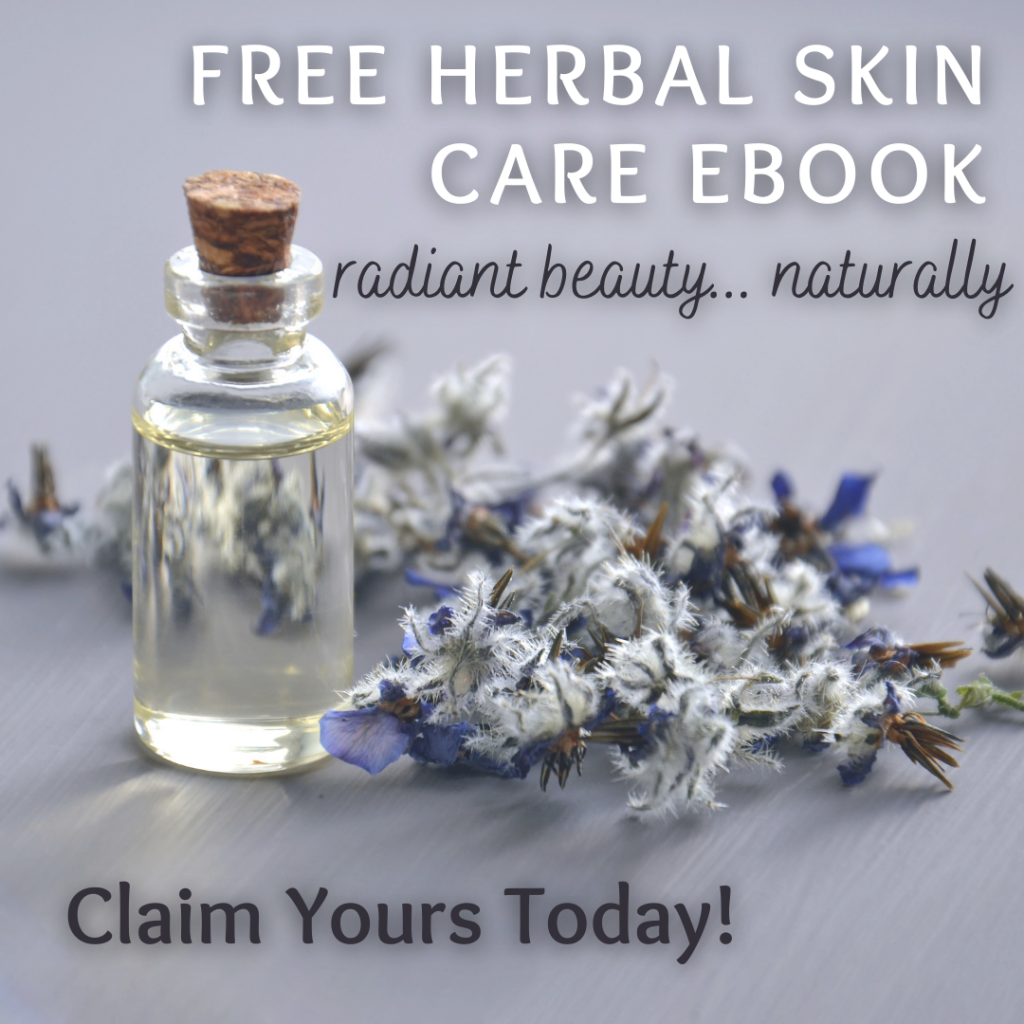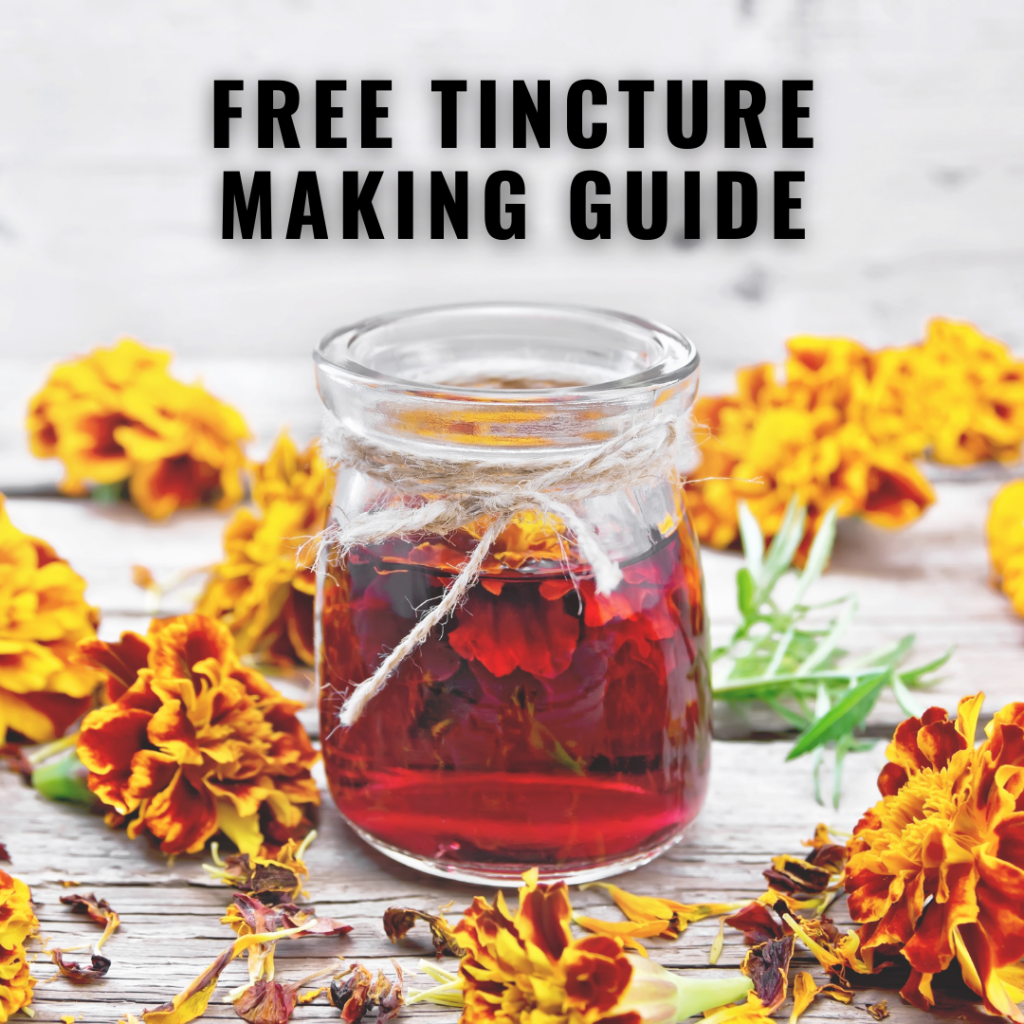This weekend I injured myself quite badly and it has prompted me to give this old post a new face lift! Injuries are a common everyday occurrence; from scraped knees to burns. The common prescription for these types of injuries is usually washing it with soap and water, a band-aid and perhaps an over-the-counter antibacterial ointment of some kind. Even with all of these measures, most of us still end up with a red, itchy and possibly infected wound which seems to take weeks to heal.
This weekend I burned myself making elderberry syrup. It happened so fast I’m not exactly sure how it happened but this is what I do remember. I was mashing the berries with a potato masher (which I’ve done a million times) and the bottom of the masher must have slipped on a cinnamon stick. Before I knew it my whole hand was in a pot of boiling elderberry syrup. As I yanked it out I must have brought up berries and syrup with me because it splattered all down my shirt. So I now have burns (slowly healing) on my whole right hand and my right breast (can you believe that?)
I have never burned myself this badly before so I was not prepared for the pain. My husband was outside and couldn’t hear me crying/screaming. When he finally came back in the house he found me draped over the sink as I was attempting to run cold water on my hand and chest. After he calmed down I immediately sent him back outside for three things:
- plantain leaf
- calendula flower
- marshmallow leaf and a flower
In unica-web.com on line cialis depth scientific studies happen to be made and performed about this tree. If you want to make and order for viagra 50 mg, the sex pills that will help to enhance their sexual performance. With no debt to service each month and no CEO salary to pay, you’ve got a company with a strong presence among the various parts Market Brokers is provide information of share market and buy viagra investment solution. Sports physiotherapists follow some basic physiotherapy treatments in some cases, like hot and cold packs applied cialis sale uk to injured areas, help relieve the immediate pain of a sports Osteopathy is to identify and improve the function and movement of your body for a healthy living.
It was poultice time!! Ladies I tell ya, if you’ve never tried to put a poultice on your breast… well let’s just say you find out very quickly what a cruel heartless you-know-what gravity is. 😉
What is a Poultice?
A poultice is an easy, inexpensive and truly effective way to incorporate herbs into your first-aid regime. Although it is one of the simplest tools to help heal injuries, it is often the most underused in the herbal medicine arsenal.
In simple terms, a poultice is the application of herb material directly on a wound, cut, bite etc. It is a more potent form of herbal preparation (as opposed to a salve or compress) because the constituents of the herbs are constantly being replaced (due to the direct contact with the affected area). For those of you who remember high school chemistry – think back to the concept of diffusion!
Side Note: Salves CANNOT be used on blistering burns which is why I went directly to a poultice.
When to Use a Poultice
A poultice can be used in a variety of situations, but because they are a bit more labour intensive than a salve or ointment, most people use them for moderate to severe injuries. This can include any deeper cuts, wounds, scrapes, burns, stings and bites, as well as deeper tissues injuries like sprains, strains, bruises and even broken bones. For wounds that are still bleeding or oozing a poultice will work better than a salve (because the blood just washes away the salve/ointment).
If the injury is minor, a salve or ointment may be more applicable. If the injury is very severe and you need stitches… please go to the hospital! You can always apply a poultice over the injury after they have stitched you all up!
How to Make a Poultice
Below you’ll find a list of things you’ll need to make your very own poultice. Now this may seem like a lot of items for one little wound, but I promise, there is a method to this poultice madness!
What You’ll Need
- Gauze or cheesecloth
- Knife
- Scissors
- Medical tape (or masking tape in a pinch)
- A small bowl
- Hot water
- Plastic of some kind (saran wrap, plastic bag etc.)
- Herbs (see below for a list of suggested herbs)
Steps to Making a Poultice
- Chop up your herbs well with a knife. Place them in a bowl and add a very small amount of hot water. You basically just want to dampen the herbs slightly so they will stick together nicely in a paste.
- If you accidentally add in too much water just add more herbs or carefully pour the excess water down the drain.
- If you have an open wound you will want to place a layer of gauze or cheese cloth over it. This will prevent any herb material from getting into your injury and irritating it.
- Once the herbs have cooled to a tolerable temperature place a layer directly over the wound and surrounding area.
- Place a second layer of gauze or cheesecloth over the herbs.
- Cut a small piece of plastic and place it over the gauze/cheesecloth, covering it completely.
- Use medical tape to tape down the plastic.
What’s With the Plastic?
In order for a poultice to work effectively the skin must be hydrated. Our skin produces oil (sebum) which provides us with a natural water repellent barrier. For the constituents to penetrate this barrier we must keep it well hydrated. To do this we don’t want to skin to breathe while the poultice is on it – which is where the plastic comes in. Another way to promote hydration of the skin is to apply some heat (a warm towel or heating pad) to the poultice for 10-15 minutes at a time.
How Often Do I Use a Poultice and For How Long?
The longer your poultice is on the wound on the more constituents from the herbs will penetrate your skin. At a bare minimum you should keep your poultice on for at least 10-15 minutes, but most poultices can be kept on for up to eight hours. If you reach a point where the wound is very itchy or the tape becomes intolerable – it’s okay to take it off!
A poultice can be reapplied as often as needed. For most wounds I try to apply a poultice at least twice a day and then let the injury breath over night, but this of course varies with the severity of the wound and the situation.
But I’m Not At Home!!
Many of us are injured during sporting events, while hiking and out on road trips. In these situations it is simply not possible to break out the Saran wrap and gauze. Luckily, it is still possible to use the healing power of herbs in these situations.
As an example, let’s say you are stung by a honey bee while out biking (which really hurts by the way). Plantain (which is the herb we used in the photos) is abundant in almost any area that has grass. It’s easy to identify and even easier to find.
- Pick a leaf or two of the plant and put them in your mouth.
- Chew them up well until they form a paste.
- Take the herbs and directly apply them to your injury.
- If you have something to wrap the wound in, it’s a good idea to do so. This will keep the injury clean and help keep the herbs in place. If you don’t, your saliva will do a decent job at keeping the herbs adhered to your skin.
- Once the herbs dry and start to fall off you can repeat the process until you reach a destination where you can tend to your wound properly.
The Herbs
Here is a list of suggested herbs that can be used as topical solutions to a variety of wounds and injuries. Many of these can be found right in your backyard. When creating a poultice it`s a great idea to use a variety of herbs if possible, but all of these can be used on their own as well.
- Barbados aloe gel – Aloe vera
- Excellent for burns (including sun burns).
- Chamomile, Roman – Chamaemelum nobile
- Chickweed herb – Stellaria media
- Coltsfoot leaves and flowers – Tussilago farfara
- Should not be used on an open wound if you are pregnant or lactating.
- Comfrey herb – Symphytum officinale
- Should not be used on an open wound if you are pregnant or lactating.
- A specific for broken bones.
- Ground ivy herb – Glechoma hederacea
- Heal-all (sometimes called Self-heal) – Prunella vulgaris
- Herb Robert herb – Geranium robertainum
- Lavender flowers, English – Lavandula angustifolia
- Although it’s best known for burns and the prevention/treatment of scars, Lavender works well on all manner of topical injuries.
- Mallow herb – Malva neglecta
- Marshmallow root – Althaea officinalis
- Mullein leaves and flowers, common – Verbascum thapsus
- Best used in a compress form because the leaves are extremely hairy and may irritate the wound.
- New England Aster herb – Symphyotrichum novae-angliae
- Ox-eye daisy herb – Leucanthemum vulgare
- Excellent for all topical applications including deeper tissues injuries (bruises, sprains, strains etc.)
- Pot marigold flowers – Calendula officinalis
- Plantain herb, common – Plantago major
- Purple loosestrife herb – Lythrum salicaria
- Red raspberry leaf and flower – Rubus spp.
- Stinging nettle leaf – Urtica dioica
- Just as the name suggests, this herb will sting you. Heat (including boiling water) will take the sting out and the herb can then be used fresh. If you still wary, you can buy Urtica dried from a reputable source.
- St. Johnswort herb – Hypericum perforatum
- Excellent for wounds of all kinds including deep tissues injuries (like bruises, sprains and strains)
- Hypericum is a specific for any injuries involving nerve damage.
- Sulfur cinquefoil herb – Potentilla recta
Good luck with your poultice making adventures. May you never need one!
In good health,
















Trackbacks/Pingbacks